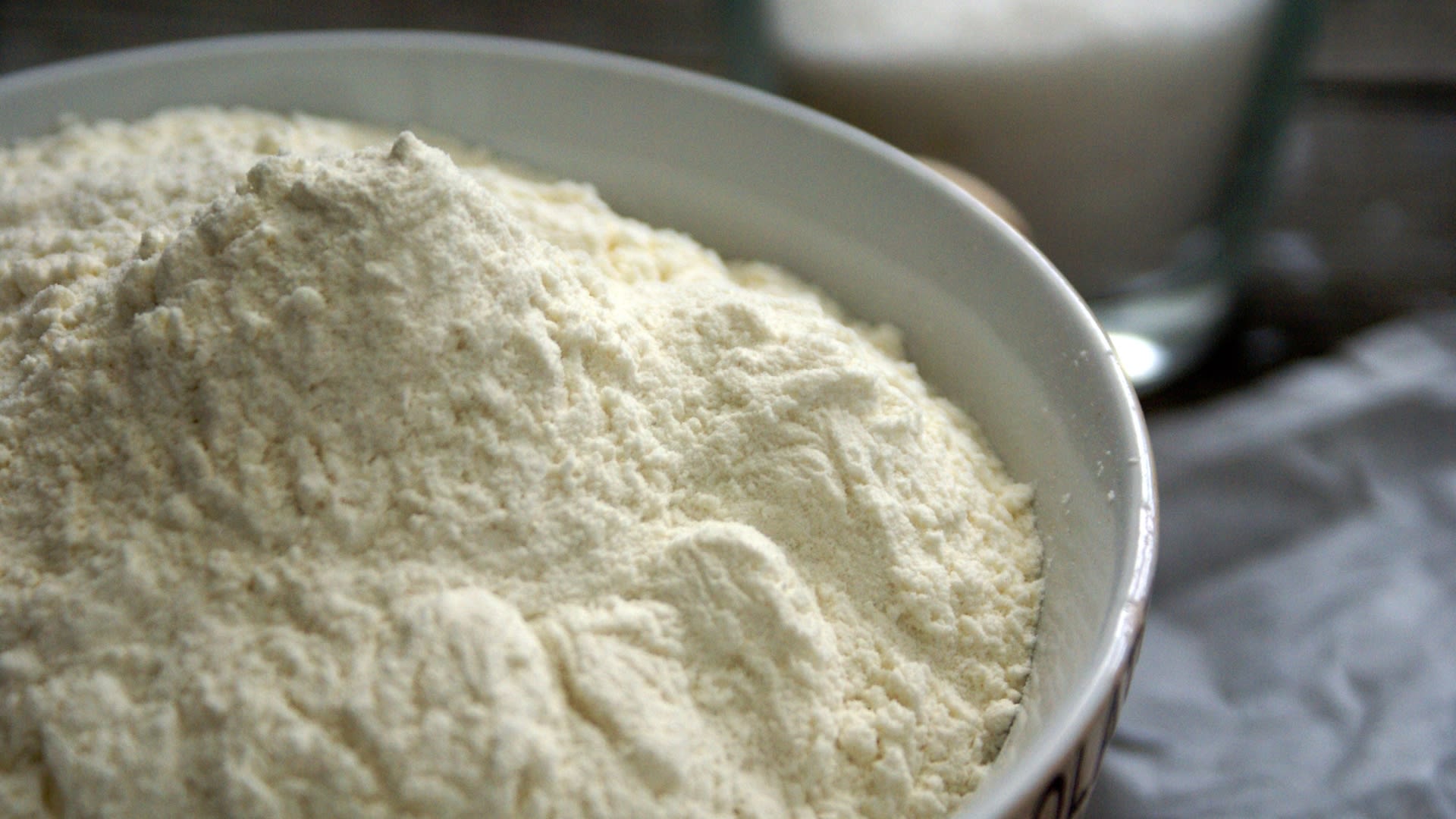According to Renub Research Latest Report malted wheat flour market is projected to expand from USD 41.22 billion in 2024 to USD 69.17 billion by 2033, growing at a CAGR of 5.92% from 2025 to 2033. The market’s expansion is driven by growing health consciousness, rising demand for natural and clean-label ingredients, advancements in convenience foods, and increasing popularity of artisanal baking.
Malted wheat flour, derived from germinated, dried, and milled wheat grains, contains natural enzymes, primarily amylase, that break down starches into simpler sugars during baking. These enzymatic properties enhance dough fermentation, improve flavor, texture, and volume, and contribute to nutritional benefits, making it a favored choice in the bakery and food processing industries.
Key players in this sector include Cargill, Incorporated, ADM, Malteurop Group, Crisp Malt, Bairds Malt Ltd., Imperial Malts Ltd., King Arthur Baking Company, Inc., IREKS GmbH, GrainCorp, and PMV Maltings Pvt. Ltd., all investing in innovation, sustainability, and global expansion to meet growing market demands.
Malted Wheat Flour Market Overview
Malted wheat flour is increasingly recognized for its ability to improve baking quality without artificial additives, making it suitable for clean-label and artisanal products. Its enzymatic activity enhances dough fermentation, improving texture, taste, and volume of baked goods.
Bakers, food manufacturers, and consumers are gravitating toward healthier, minimally processed ingredients, driving the market growth of malted wheat flour. Furthermore, convenience foods such as ready-to-eat baked items benefit from the flour’s ability to retain moisture, improve shelf life, and enhance flavor, supporting its adoption in modern food production.
The market’s growth is primarily fueled by three major factors:
👉 Want to explore detailed market trends, segment insights, and forecasts? 🔗 Request Sample Report
1. Rising Demand for Clean-Label and Natural Ingredients
Consumers worldwide are becoming increasingly conscious about the ingredients in their food. Products with no artificial additives, preservatives, or chemical enhancers are preferred, boosting the demand for malted wheat flour.
The natural germination and drying process used in malted flour production aligns with clean-label and artisanal baking trends.
Its inherent enzymatic properties enhance dough flavor, texture, and fermentation without synthetic interventions.
Food manufacturers are using malted wheat flour to meet consumer demand for healthier, minimally processed foods, fueling product innovation and market expansion.
2. Increasing Global Consumption of Bakery Products
The rise in bakery product consumption is directly driving demand for malted wheat flour.
Breads, cakes, pastries, and cookies are staples across various markets.
Malted wheat flour enhances fermentation, texture, volume, and flavor, making it essential for both industrial and artisanal bakers.
Growth in the global bakery industry creates a consistent and expanding demand for ingredients that improve product quality, such as malted wheat flour.
3. Expansion of Convenience and Ready-to-Eat Food Segments
Busy lifestyles worldwide have increased the need for quick, high-quality meals.
Malted wheat flour enhances the taste, texture, and shelf life of baked goods in ready-to-eat and convenience food segments.
Its enzymatic activity aids moisture retention and fermentation, resulting in softer, more appealing baked items.
The flour’s adoption in packaged breads, pastries, and snack foods supports innovation and growth in the food processing and convenience sectors.
Challenges Facing the Malted Wheat Flour Market
1. Shelf Life and Storage Limitations
Malted wheat flour’s enzymatic activity is sensitive to environmental conditions, including light, humidity, and temperature.
Improper storage can reduce enzyme effectiveness, impacting dough fermentation, texture, and flavor.
Specialized packaging and climate-controlled storage raise operational costs for producers.
Shorter shelf life compared to regular flour limits distribution range and inventory management, posing challenges for manufacturers and suppliers.
2. High Production Costs
The malting process—which includes soaking, germinating, and drying wheat—requires:
Specialized equipment
Skilled labor
Additional processing time
These factors increase production costs, making malted wheat flour more expensive than regular flour. High costs may limit adoption by cost-sensitive bakeries and food manufacturers, particularly in competitive markets. Maintaining consistent enzyme activity and product quality adds to production complexity, posing a challenge to market expansion.
Regional Market Insights
United States
Rising demand from the food processing and bakery sectors is driving market growth.
Malted wheat flour is highly valued for enhancing dough fermentation, texture, and flavor.
Consumer preferences for nutritious, clean-label products and the growth of convenience foods boost market adoption.
Innovation in natural and functional ingredients supports continued expansion.
United Kingdom
Market growth is fueled by demand for premium, clean-label baking ingredients.
Malted wheat flour is appreciated for its enzymatic properties, which improve fermentation and product quality.
Simpsons Malt Limited received recognition from the Farm Sustainability Assessment (FSA) in November 2024, highlighting sustainable supply chain practices.
Viking Malt joined the EU’s Sustain-a-bite project in January 2025 to improve resource efficiency, demonstrating the UK market’s commitment to sustainability and innovation.
India
The market is expanding due to rising demand for nutrient-dense, functional foods.
Malted wheat flour improves nutritional profile, flavor, and texture of baked goods, aligning with health-conscious consumer preferences.
Its popularity in bread and bakery products drives both OEM and artisanal adoption.
Innovation and sustainable practices by local producers further support market growth.
Saudi Arabia
Growth is supported by consumer demand for functional and health-conscious food ingredients.
Vision 2030 initiatives promote domestic flour production, reducing wheat import dependence.
The flour’s enzymatic benefits enhance the nutritional quality and texture of baked goods, aligning with consumer trends toward clean-label and minimally processed foods.
Investments in local production and food security initiatives stimulate market expansion.
👉 For deeper analysis, detailed segment data, and company insights: 🔗 Request Customization Report
Recent Developments in the Malted Wheat Flour Market
March 2025: Heineken and Soufflet Malt partnered, with Soufflet Malt investing EUR 100 million (~USD 108.5 million) to build a malting facility in South Africa, aiming to supply Heineken with high-quality malt.
November 2024: Simpsons Malt Limited was recognized by the Farm Sustainability Assessment (FSA) for its supply chain sustainability initiatives, emphasizing environmental responsibility.
These developments highlight the market’s focus on sustainability, innovation, and strategic partnerships to meet growing global demand.
Market Segmentation
By Application
Bakery & Confectionery – Major segment due to fermentation and flavor-enhancing properties.
Food & Beverages – Used in malted drinks, cereals, and other processed foods.
Others – Includes pet food, industrial food processing, and specialty applications.
By Product Type
Diastatic – Contains active enzymes; commonly used in bread-making.
Non-Diastatic – Used for flavor and color enhancement without affecting enzymatic activity.
By Region
North America: United States, Canada
Europe: France, Germany, Italy, Spain, United Kingdom, Belgium, Netherlands, Turkey
Asia-Pacific: China, Japan, India, Australia, South Korea, Thailand, Malaysia, Indonesia, New Zealand
Latin America: Brazil, Mexico, Argentina
Middle East & Africa: South Africa, UAE, Saudi Arabia
Competitive Landscape
Key market players focus on innovation, sustainability, and global expansion:
Cargill, Incorporated – Offers diastatic and non-diastatic malted wheat flours for industrial and bakery applications.
ADM – Develops specialty malted wheat flours for clean-label and functional foods.
Malteurop Group – Global supplier emphasizing quality and sustainability.
Crisp Malt – Focused on innovative malted products for bakery and beverage applications.
Bairds Malt Ltd. – Provides high-quality malt for artisanal and commercial baking.
Imperial Malts Ltd. – Supplier of natural and sustainable malted flours.
King Arthur Baking Company, Inc. – Offers consumer-focused and artisanal malted wheat flours.
IREKS GmbH – Provides malted wheat flour for industrial bakery solutions.
GrainCorp – Major supplier for food manufacturers and bakeries.
PMV Maltings Pvt. Ltd. – Expanding its footprint in Asia-Pacific and Middle East markets.
These companies prioritize research and development, sustainable sourcing, and product innovation to capture the growing global market.
Future Outlook
The malted wheat flour market is poised for sustained growth due to:
Rising global interest in clean-label and natural ingredients
Increasing consumption of bakery and convenience foods
Expanding ready-to-eat food and snack segments
Focus on health-conscious and functional foods
Government initiatives promoting local production and food sustainability
Challenges such as shelf life limitations, storage sensitivity, and high production costs exist, but technological innovations, improved packaging solutions, and strategic partnerships are expected to mitigate these constraints.
The market is increasingly positioned at the intersection of health, convenience, and sustainability, making malted wheat flour a key ingredient for modern baking and food processing industries worldwide.
Note: If you need details, data, or insights not covered in this report, we are glad to assist. Through our customization service, we will collect and deliver the information you require, tailored to your specific needs. Share your requirements with us, and we will update the report to align with your expectations.









